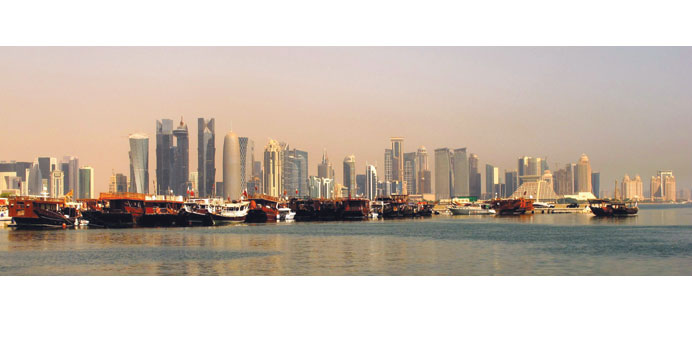Qatar’s merchandise trade balance may scale up to $54.2bn in 2024 from $37.2bn this year, FocusEconomics has said in its country report.
According to FocusEconomics, Qatar’s public debt has been forecast to fall to 54.9% of the country’s GDP by 2024 from 73.1% this year.
The country’s public debt as a percentage of the gross domestic product will fall continuously over the next four years, the researcher said.
It is projected at 72.1% next year, 64.5% in 2022 and 59.7% in 2023.
Qatar’s GDP has been estimated to reach $231bn by 2024 from $193bn this year, the new report has shown.
Next year, it will be $201bn, followed by $211bn (2022) and $221bn in 2023.
GDP per capita, FocusEconomics said, has been estimated to reach $82,997 in 2024 from $69,790 this year.
GDP per capita next year will be $72,723, followed by $76,037 (2022) and $79,462 in 2023.
Qatar’s economic growth in terms of nominal GDP will reach 4.7% in 2024 from 0.7% by the year-end.
Next year, economic growth in terms of nominal GDP will be 4.5%, 4.8% in 2022 and 4.8% in 2023.
The country’s fiscal balance as a percentage of GDP is set to rise to 4.6% in 2024 from an estimated -2.9% this year.
The current account balance (as a percentage of GDP) will be 3.2% in 2024 compared with -5.2% in 2020, -1% (2021), 1.5% (2022) and 3.2% in 2023.
International reserves may exceed $37bn in 2024, from $37.7bn this year; FocusEconomics estimated it will cover 9.5 months of country’s imports by then.
The country’s inflation, the report noted, will be 2.1% in 2024 and 0.5% this year. Qatar’s unemployment rate (as a percentage of active population) will remain a meagre 0.2% in 2024, unchanged from this year.
According to FocusEconomics, the economy would have “suffered” in the first quarter, as Covid-19 containment measures and travel restrictions would have “hammered” the tourism and retail sectors, while a sharp fall in hydrocarbon prices would have weighed heavily on the terms of trade. On March 18, the government suspended international flights and enforced a strict lockdown on public life, which will likely remain in place until the virus outbreak subsides.
On the fiscal front, the government announced a $20.6bn package to counter the economic impact of the virus – mainly comprising of liquidity and direct support for sectors at greater risk, FocusEconomics said.
Economic prospects for this year moderated considerably as Covid-19 will likely batter the tourism and retail sectors in the first half of the year.
Moreover, “depressed” oil and gas prices will weigh heavily on government finances and the external sector. Nevertheless, stronger energy output should help keep the economy afloat.
FocusEconomics panelists see growth of 0.2% in 2020, which is down 1.8 percentage points from last month’s forecast, and 3.1% in 2021.
Consumer prices fell 0.5% in annual terms in February, stronger than January’s 0.4% decline.
Inflation should return this year on a more “favourable” base effect and looser financial conditions, FocusEconomics said.
In March, the Qatar Central Bank cut its lending rate by 100 basis points to 2.5%, echoing the Fed’s rate cuts, it said.
FocusEconomics panelists see average consumer prices increasing 0.5% in 2020, which is down 0.6 percentage points from last month’s forecast. In 2021, the researcher sees inflation averaging 1.4%.
Business / Business
Qatar’s merchandise trade balance may scale up to $54.2bn in 2024, says FocusEconomics


